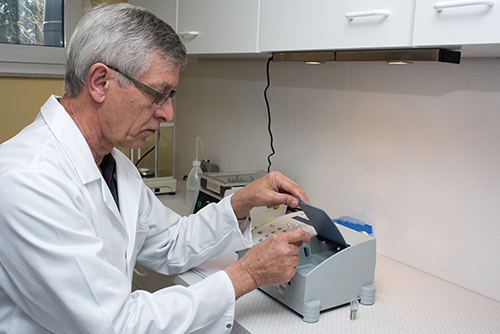Fields
Testing
If the surfaces of medical devices are accessible to visual inspection they are also easily and safely cleaned in the WD. Experience with sampling and testing several thousand instruments shows that residual protein from these surfaces can be expected to be in the region of <1 µg/cm². The areas that are not possible to inspect visually, simultaneously represent a challenge to cleaning- such as crevices e.g. in joints, or narrow lumina. In crevices where the distance between the surfaces facing each other is in the micrometre range, penetration of steam here can be hampered by small amounts of soil, such as blood. This can lead to quite large surface areas being inadequately sterilised. So these areas require particular attention when testing cleaning. Sampling for destruction free quantification of residual soil e.g. as protein, should be concentrated on these areas. Focusing on these areas, with current technical know-how, validation data showing protein (residual soil) of at least <3 µg/cm² is easily and reliably attained. Punctiform space-resolved analysis of the surfaces is not possible to conduct without destruction. This means that sample taking using elution, as far as this is practically possible, must be limited to the problem zones. To verify cleaning, sampling on problem areas should always be conducted using SDS elution or extraction to optimise recovery.
The analysis of any residual protein after cleaning follows, using the modified OPA method or the BCA method. To confirm results, the Pseudoperoxigenase test (another semi-quantitative test) or the quantitative TURBO TMB method on haemoglobin can be performed. The TOC determination test for quantification of residues, favoured by the FDA is in the preparation stage.

 EN
EN DE
DE